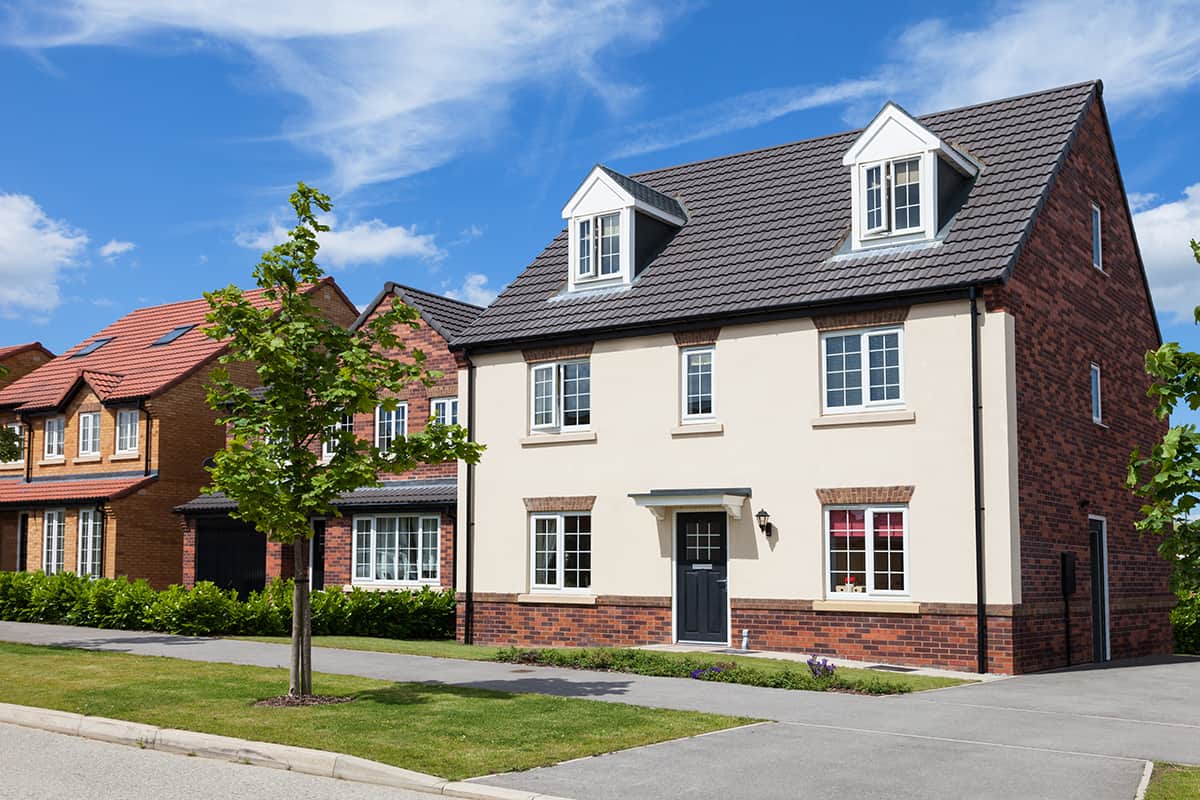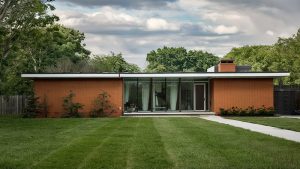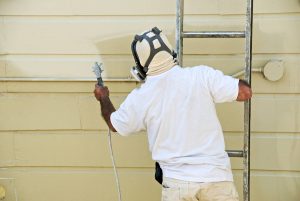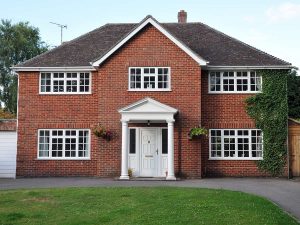In many homes, the upper parts of the foundations will be visible from street level. This means that they form a part of the overall exterior aesthetic of your property, so keeping them in good condition is beneficial not only to the structure of the house but also to the curb appeal of the home. Painting the foundation is one way you can help to protect it while also making it more attractive to look at.
House foundations can be painted in any color you like, but neutral or subtle colors tend to work best. Gray, brown, beige, white, and black are commonly chosen as house foundation colors, but shades of dark blue or green can also work well.
Here we look at the best choice of paint colors for house foundations and what you need to consider when choosing your paint shades.
Should You Paint House Foundations?
The majority of your home’s foundations will not be visible because they will be below ground or obscured by plants and shrubs planted around the borders of your property. When foundations are visible, it is usually just one or two feet in height, which you can see from street level.
Many people choose to paint their house foundations to give the home a better look overall and to make the property appear more finished and looked after. Painting the foundations can also offer other benefits that are not just visual. Using dark colors can help the lower levels of the home absorb heat, which can be useful to bring the internal temperature of the property up if you live in a cold area.
Likewise, painting the foundations in white can reflect heat which will help basements in hot climates to remain cool through summer. Painting foundations also provide an extra layer of protection to the foundations, helping them fare better against storms, snow, rainfall, and other adverse weather.
Protecting the foundation with paint can actually increase the lifespan of the property and limit potential issues such as cracks and movement in the foundation.
Should House Foundations be Dark or Light?
From a visual perspective, most designers agree that house foundations should be the same color, or a darker color, than your siding. This is because when the foundations are lighter in color than the siding, it can make the property look unbalanced. A darker color on the lower portions of the house makes it feel anchored or grounded, which can make a house appear to be more settled into its surroundings.
However, lighter colors can work, too, depending on the color of the siding on the house. If the siding is white, then white foundations can blend in to give the home a more seamless look while also helping to repel heat in hot climates. If the siding of the house is a darker color, then light foundations can draw too much attention to the base of the home while also making it appear to be top-heavy.
Best Paint Colors for House Foundations
Black
Black is a great color for house foundations on homes where the siding is a medium to dark shade. For example, a house with medium or dark gray siding will look stylish with black foundations because it adds a layer of depth while maintaining the overall balance.
However, for homes that have white or pale-colored siding, black foundations would look too bold and draw the focus to an area of the exterior, which shouldn’t be the main feature. In this case, black foundations should be avoided.
White
White is a classic color for house foundations, and it works best on properties or houses with white siding. When both the siding and foundations are white, these elements of the home appear to blend into one another so that the foundations aren’t obvious.
This can make the home appear larger and also give it a more consistent look. White-painted foundations can also help basements stay cool in summer.
Beware that since foundations are close to the ground, which can get very dirty, that white foundation may need cleaning or repainting more regularly than darker foundations. When you mow the lawn, expect loose blades of grass to shoot up and stick to the white siding, and watch out for any stains caused by nearby splashing in puddles.
Brown
Brown is a nice color for house foundations because it is neutral while also being quite dark. As a nature-inspired color, brown blends in well in most surroundings, especially in rural areas.
This can help the home feel more engaged with the land. Brown foundations will not show dirt or stains very easily, so they can also be considered a low-maintenance color.
Beige
Beige foundations look stylish when set against paler colored siding such as white or cream. This is a nice compromise if you don’t want white siding but also want to stay away from darker, bolder colors.
Beige is a warm neutral that can help the exterior of a property look welcoming while also being fairly easy to maintain because it won’t show stains too obviously.
Gray
Gray is a popular color for house foundations because it is neutral and modern. Gray can come in so many shades, but darker types of gray will be the best choice for homes with medium to dark siding, while pale grays can look impressive with white siding.
Gray house foundations work particularly well on coastal-themed properties where the siding is blue.
Blue and Green
If you want a more interesting color for your house foundations, opt for green or blue. These colors are relatively neutral because they will blend into the background more so than warm shades like red, orange, or yellow. Choose darker shades with dark siding, or consider a sage green with white siding.
How to Paint House Foundations
There are a number of scenarios that might lead to the need to paint the foundations of your home. If you have moved into a new property and find that the previous owners did not do a great job of looking after the exterior paintwork, then you’ll probably want to sort this out and give it a fresh look with a new lick of paint.
If your foundations suffer from any issues and need repairing, then you’ll also want to give them a new coat of paint once repairs have been carried out to hide any remedial work. If your foundations are painted in a light color, then they can become quite dirty from passing traffic, rebounding muddy rainfall, or general wear and tear.
In this case, you may wish to repaint your foundations every 2 to 5 years to give them a fresh, new look. Dark foundations can also need repainting quite regularly, because the sun can fade darker colors and make them look washed out.
Assess
The first step in any exterior paint job is to carefully assess what you are going to be dealing with and form a plan. For foundations, you need to check if any cracks exist or if there are any chips in the masonry which need to be repaired. Look out for any signs of wear and tear that will need to be addressed before the painting can commence.
Clear the area
Before you can get to work, you’ll need to clear the space around your foundations. This could mean pulling planters away from the side of the house or cutting back the lawn to make the foundations easier to access.
Clean
The foundations should be cleaned before you begin painting, as this will give you a better finish, and it will also help the paint to adhere better to the foundations.
If the foundations haven’t been cleaned in a while, then you may need a pressure washer, or a bucket of soapy water, and a scrubbing brush to remove any grime from the foundations. If there isn’t much sign of dirt, then hosing down the foundations may suffice. Allow the foundations to dry out before you continue.
Repair
Next, repair any areas of the foundations that require attention. This could mean filling cracks or smoothing out bumps. If you spot any signs of structural damage, be sure to contact an experienced builder for an assessment rather than filling these yourself. Wait for any repairs to be finished and dried before continuing.
Paint
When the foundations are ready to paint, use decorators’ tape and old newspapers to protect your siding and cover any plants with tarpaulins. A paint sprayer is the best option for painting foundations because it gives a really even, professional finish where no brush marks can be seen.
It also gets the job done in a short amount of time, which can save a lot of hassle if you have a large property and, therefore, a big expense for foundations. If you don’t have a paint sprayer, a roller, and a paintbrush will work, you’ll just need more patience and time. Use masonry paint intended for exterior use, and follow the manufacturer’s instructions. You will typically need to wait several hours between each coat of paint.











